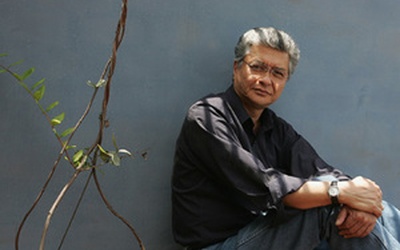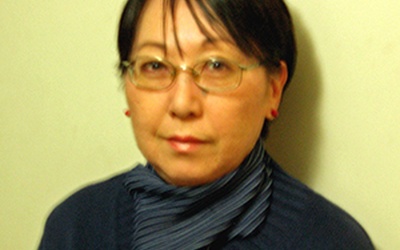
Amelia Morimoto
@AmeliaAmelia Morimoto is coordinator and editor of the San Marcos Foundation - Japanese American National Museum Agreement, Discover Nikkei Project (2007-present). She is the author of the books: “ Japanese immigrants in Peru ” (Lima, 1979), “ Population of Japanese origin in Peru: Current profile” (Lima, 1991); “ Peru no Nihonjin Imin” (Tokyo, 1992) and “ The Japanese and their descendants in Peru” (Lima, 1999). She is co-author, among others, of the books: “ The Memory of the Eye. 100 years of Japanese Presence in Peru ” (Lima, 1999/with José Watanabe and Óscar Chambi) and “ When the East came to America. Contributions of Chinese, Japanese and Korean immigrants in Latin America and the Caribbean ”, Director of the study and editor (Washington DC, IDB, 2004).
Last updated September 2009
Stories from This Author
Presencia nikkei en la cocina peruana II
April 27, 2010 • Amelia Morimoto
>> Primera parteEl inicio del boom de los chefs y restaurantes nikkeiA fines del siglo 20, los restaurantes de varios nisei, como “Costanera 700” de Humberto Sato, “Rosita” de Rosita Yimura ( – 2005), “Ah -gusto” de Augusto Kage, “La Buena Muerte” de Minoru Kunigami (1918- 2004)1, “El encuentro de Otani” y “Lobos de Mar” de la Familia Otani, “Darío” de Darío Matsufuji, entre otros, alcanzaron un amplio reconocimiento que no se basaba sólo en la popularidad entre sus comensales o clientes, …
Presencia nikkei en la cocina peruana I
April 26, 2010 • Amelia Morimoto
IntroducciónLa primera versión de este artículo fue escrita en 1993 para el libro “Cultura, identidad y cocina en el Perú”1. En aquellos momentos, aunque ya conocida, la cocina nikkei peruana no había alcanzado aun la difusión y el reconocimiento de los que actualmente goza, al igual que el caso de la cocina japonesa en su excepcional dimensión internacional en el presente. A pesar de que, desde entonces, las publicaciones especializadas con respecto a las comidas japonesa y nikkei se han …
Los nikkei en el Perú II: Identidad y cultura
Sept. 16, 2009 • Amelia Morimoto
En la XV Conferencia Panamericana Nikkei (Copani) que se llevará a cabo en la ciudad de Montevideo, Uruguay en la tercera semana del presente mes, el Museo Nacional Japonés Americano, a través del Proyecto Discover Nikkei, estará a cargo de la mesa (workshop) que tratará – en su segunda sesión- el tema “Multiracialidad y multietnicidad en las Comunidades Nikkei”. Este segundo tema plantea, en principio, las preguntas: ¿qué es Nikkei? y ¿quién es Nikkei? Luego, partiendo de la observación de …
Los Nikkei en el Perú I: La migración en cifras
Sept. 15, 2009 • Amelia Morimoto
Presentación1 En la tercera semana del presente mes se llevará a cabo la XV Conferencia Panamericana Nikkei (Copani) en la ciudad de Montevideo, Uruguay. En tal evento, el Museo Nacional Japonés Americano, a través del Proyecto Discover Nikkei, estará a cargo de la mesa (workshop) que tratará los temas: “La diáspora Nikkei: La migración Nikkei en la Sociedad Global” (1ra. sesión) y “Multiracialidad y multietnicidad en las Comunidades Nikkei” (2da. sesión). El primero servirá, por un lado, para analizar …
Dos Nikkei entre los 50 mejores estudiantes de la Universidad Nacional Mayor de San Marcos
June 23, 2009 • Amelia Morimoto
El Vicerrectorado Académico de la Universidad Nacional Mayor de San Marcos organizó la ceremonia de premiación a los 50 estudiantes con mayor rendimiento académico durante el año académico 2008, como parte de las actividades conmemorativas por el 458° aniversario de la fundación de esta casa de estudios. Dicha ceremonia se llevó a cabo el viernes 5 del presente en el Salón General del Centro Cultural de San Marcos (en la antigua y restaurada Casona del Parque Universitario), con la asistencia …
Impresiones acerca del Simposio “Presencia Japonesa en América Latina” de Sao Paulo
June 3, 2008 • Amelia Morimoto
Los días 19 y 20 de Mayo del presente fueron las fechas del Simposio “Presencia Japonesa en América Latina”, organizado por la Fundación del Memorial de América Latina del Gobierno del Estado de Sao Paulo, Brasil, en conmemoración del Centenario de la Inmigración japonesa en ese país, contando con el apoyo de varias instituciones Nikkei brasileñas y con la coordinación académica del Dr. Shozo Motoyama, profesor de la Universidad de Sao Paulo. Mi primera impresión, y seguramente también para la …
La religión entre los Nikkei del Perú
May 1, 2007 • Amelia Morimoto
En el presente, una de las diferencias que puede ser observada entre los individuos y comunidades de origen japonés de Latinoamérica con relación a los países del norte del continente americano es la religión. El predominio del catolicismo entre las poblaciones de los países latinoamericanos se reproduce también en los nikkei y, entre las comunidades de este origen de la región, parece ser que la del Perú es la que cuenta con la cifra relativa mayor de católicos.1 En el …
Cifras y migraciones entre Perú y Japón
April 4, 2007 • Amelia Morimoto
En el tema de la migración de japoneses al Perú, el aspecto de las cifras no sólo ha sido motivo de controversias entre autores y actores, sino también uno de los más sensibles pues, en algunos momentos del siglo pasado, se convirtieron en argumentos para acciones y medidas orientadas a la exclusión de la población de ese origen. Entre las cifras, sobre la que existe un cierto consenso—por lo menos en la historiografía especializada—es en la referente al período de …
Las ausentes en las fotos: Las mujeres Nikkei en el Perú
March 8, 2007 • Amelia Morimoto
En una revisión de la producción bibliográfica sobre los Nikkei en el Perú notamos que - aunque la cifra de mujeres autoras es significativa - el o los temas sobre mujeres tienen una presencia mínima o están casi ausentes. Nos preguntamos: ¿ha sido real y simbólicamente pobre tal presencia en la historia? o ¿es que real y simbólicamente ha sido minimizada? En búsqueda de respuestas, analizamos detenidamente una de las fuentes más sugestivas: un álbum impreso en 1924 por la …
Sobre nombres e identidad colectiva: El caso de los Nikkei en el Perú
Jan. 25, 2007 • Amelia Morimoto
El tema de la identidad, aun cuando muy frecuentemente mencionado en los discursos, sobre todo políticos y académicos, es uno de los que — debido a su complejidad — presenta mayores dificultades para una definición certera. No obstante, algunas nociones al respecto y acercamientos a casos precisos nos pueden permitir una mayor comprensión sobre este tema que parece ser muy relevante en las agendas actuales. Sabemos que las identidades individuales y colectivas se van definiendo a lo largo de las …









